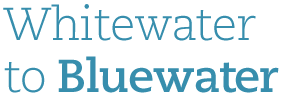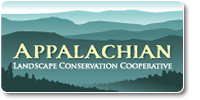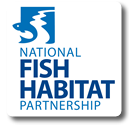Tampa Bay Seagrass Transplanting Project
| Project Start Date | |
|---|---|
| Project Leader | |
| Organization |
This project is a seagrass transplanting project within Tampa Bay, Florida.
Background Information
Seagrass loss was first fully documented from photographs in Hillsborough Bay before 1950, although historic navigation charts and earlier snapshots indicate that seagrass loss may have been occurring even earlier. Seagrasses have been recovering in Hillsborough Bay since the mid-1980s, following significant decreases in nitrogen loading from wastewater treatment plants discharging to the bay and resulting water clarity improvements.
Seagrass acreage in Hillsborough Bay in 1950 was estimated as 2,321 acres. By 1988, less than 7 acres total were mapped. Since 1988, seagrasses in Hillsborough Bay have increased significantly; 565 acres were mapped in 2004, the highest recorded amount since 1950. However, seagrass acreage is still far below the adopted long-term target of recovering seagrass acreage to 1950 levels.
Tampa Bay Watch, in partnership with City of Tampa - Bay Study Group, designed, permitted, and constructed a series of six, 10m x 20m plots of Syringodium filiforme along the southern shoreline of the MacDill Peninsula as part of Permit # 29-0256820-007. The harvesting and planting of the seagrass plugs was completed by Tampa Bay Watch, Inc. and City of Tampa- Bay Study Group in twelve work days over the summer of 2010 with the help of 73 community volunteers and totaling 365 volunteer hours.
There are three primary objectives of this project: 1) to enhance and restore seagrass in areas of Hillsborough Bay where they have existed historically; 2) to evaluate the concept that historically present off-shore seagrass meadows were instrumental in maintaining prominent stable long-shore sandbars in Tampa Bay; and 3) to encourage greater stewardship of Tampa Bay natural resources by providing hands-on educational experiences for community and student volunteers.
This project is the third phase of a highly successful seagrass transplanting program initially supported by the Environmental Protection Commission of Hillsborough County in 2006. Results of the 2006 program were utilized to design a second transplanting effort adjacent to the Phase 1 sites but within the elevational zone of the greatest seagrass transplant survival and parallel to the shoreline to accelerate recovery and expansion of manatee grass, Syringodium filiforme, along the southern Mac Dill Peninsula shelf. The 2006 donor site recovered to background conditions within the first 12 months of monitoring. The donor site and transplant site monitoring results of Phase 1 were the driving force for the Phase 2 design to transplant a set of six new seagrass plots in the depth zone of the highest survival and coverage of the Phase 1 program. Similarly, successes of the Phase 2 (2009) program were utilized to design the third phase of the transplanting effort- DEP permit number 29-0256820-007. This transplanting effort took place in the area that is directly adjacent to the east to the Phase 2 design on the same elevational plane
With the ongoing maintenance of adequate water quality to support seagrass, planting small “starter plots” of seagrass provide the plant material source needed for manatee grass and turtle grass expansion in Hillsborough Bay. These two species of seagrass rarely set seed in Tampa Bay, and typically expand by rhizomal growth if light and other conditions are adequate to allow their expansion. Although we do not advocate planting large expansions of seagrass, by hand-planting seagrass in relatively small, carefully-selected plots we expect to provide enough biomass to allow these seagrass species to naturally send out rhizomes and expand the patch sizes in the selected sites over time.
Completed
Associated Locations
| Town | zip code | county | state | congressional dist |
|---|
Barriers
| Name of barrier | Latitude | Longitude | FONS ID | FIS Project ID | FWS Acc. # |
|---|
Document Actions









